Desk Sharing
How companies benefit from flexible office structures
Desk sharing is becoming increasingly relevant with regard to the efficient use of office space in our modern working world. Individual desk sharing concepts create shared workspaces that enable flexibility and agility. This is a practical solution, especially against the backdrop of hybrid working models. In this article, we explain what desk sharing is, how the concept can be introduced individually and what needs to be considered in order to implement desk sharing successfully.
Contents
- What is desk sharing?
- Types of desk sharing
- Advantages of desk sharing
- How desk sharing saves costs
- How to calculate the desk sharing quota?
- A booking system for effective desk sharing
- Most common concerns of employees
- What should companies consider when introducing desk sharing?
- Frequently asked questions
- Desk sharing with coneon
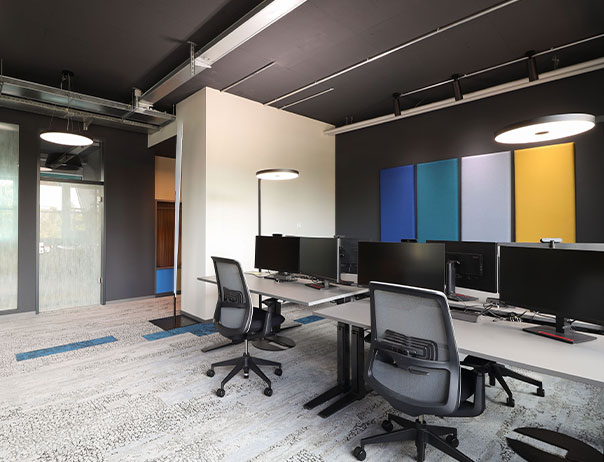
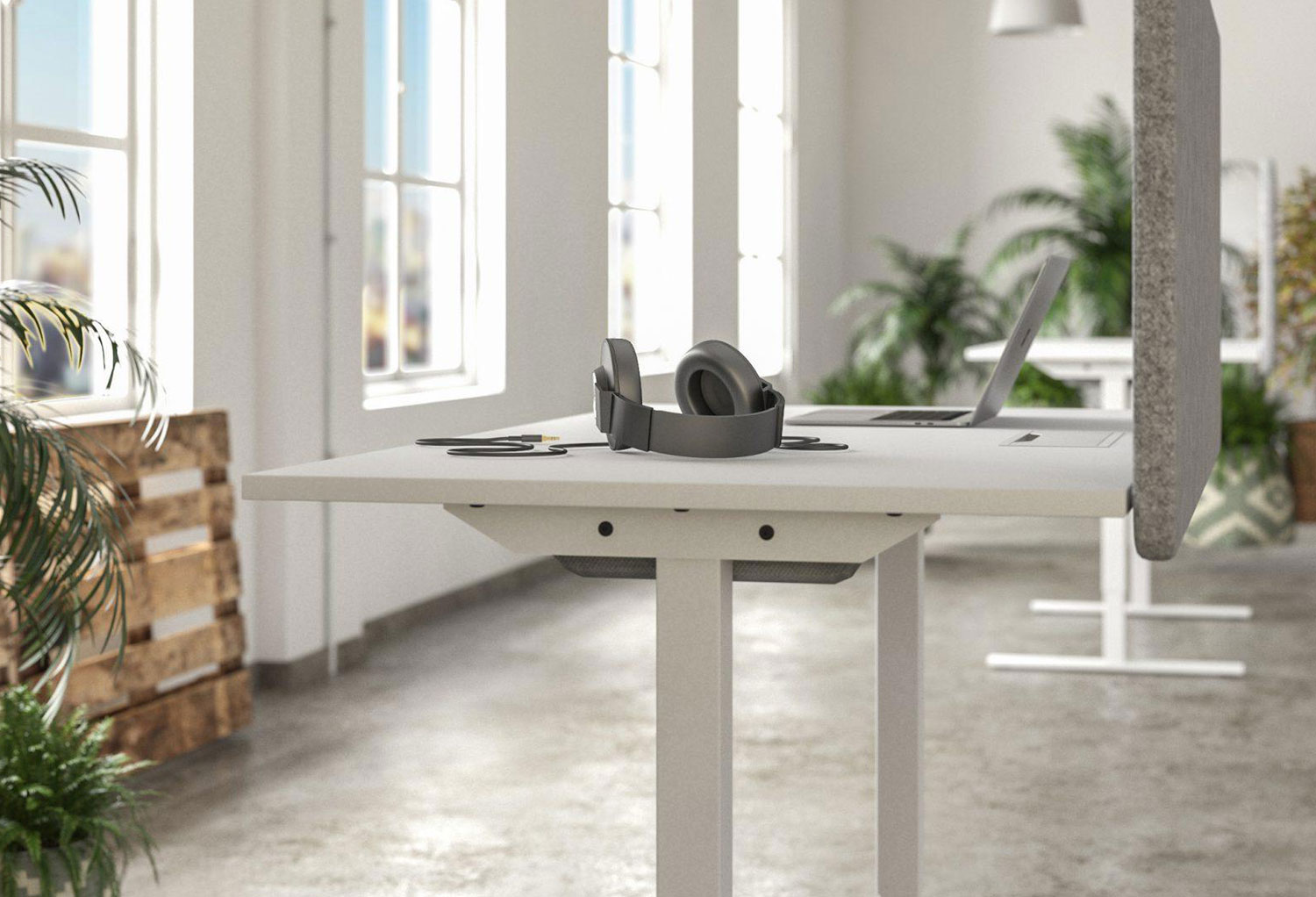
What is desk sharing?
Desk sharing is an approach to work organization in which workstations are not permanently assigned but can be used flexibly by several employees. By sharing rooms and workspaces, companies can use space more efficiently and reduce costs. In addition, cross-departmental collaboration is promoted by the ability to choose workstations as required.
What desk sharing concepts are there?
Desk sharing offers a wide range of options for efficient workplace design, which must be tailored to the individual needs of a company. The most common desk sharing models are:
- Hot Desk: With this form of desk sharing, there are no fixed workstations. Employees choose a desk of their choice depending on availability and use it for the duration of their working hours.
- Desk sharing in a team: In this variant, employees in a team share the shared workstations. This strengthens team spirit and promotes the flow of information.
- Desk sharing at department level: In larger organizations, desk sharing at department level can also be useful. Resources are used efficiently and the exchange within the department is strengthened.
The desk sharing model cannot be selected across the board, but must be adapted to the needs and working methods of your workforce and the requirements of your company. Everyday working life can only be designed efficiently and flexibly with a precisely tailored work organization and individual workplace design.
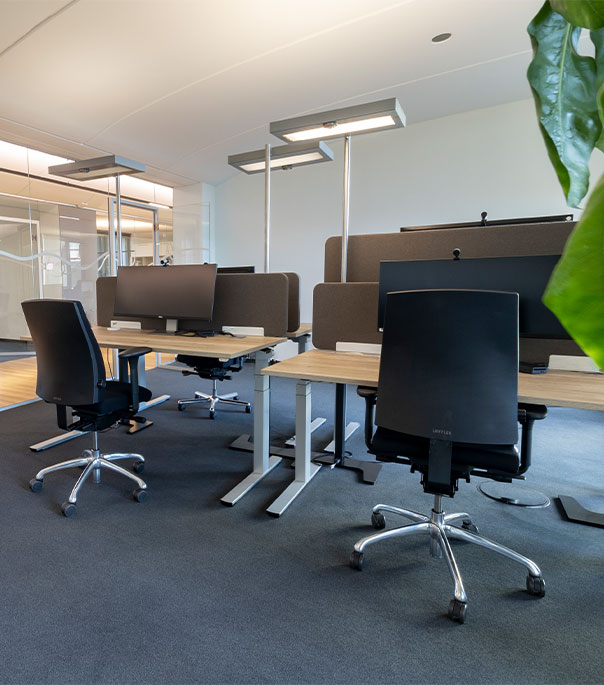
Advantages of desk sharing
Desk sharing is an innovative workplace concept that offers numerous advantages for companies and employees. The advantages of desk sharing lie in the flexible use of office space, a modern working environment and new opportunities for collaboration. At the same time, companies can use their resources more efficiently and adapt to changing working models. A well-thought-out concept maximizes the benefits of desk sharing and creates the basis for a productive and future-oriented way of working.
Advantages for employees
- Flexibility: Shared desks allow employees to choose their workstation according to their needs and preferences, resulting in a productive working environment.
- Collaboration and networking: By changing workstations, employees regularly come into contact with different colleagues and can exchange ideas.
- Productive workplace: Employees can choose the best workplace depending on the task and the people involved. Close to project partners or in a quiet area. This directly supports the activities.
- Innovative working environment: A dynamic and flexible working environment increases employee motivation and creativity.
Advantages for the employer
- Cost efficiency: By reducing the number of fixed workstations required, the costs for office space and equipment can be lowered.
- Space efficiency: Space utilization is optimized and vacant workstations are avoided by regularly working from home.
- Adaptability: Companies can react more quickly to changes in the number of employees without having to undertake major restructuring.
- Employer attractiveness: Visibly practiced flexible working models increase the attractiveness of the company for employees and applicants.
Cost savings through space savings
Desk sharing allows unused office space to be reduced and used more efficiently. As not all employees are on site at the same time, workstations can be designed flexibly and the space required can be reduced. Less space means lower rental and operating costs, while the working environment remains modern and needs-based. We support you in analyzing your occupancy rate and creating an optimal space calculation for your company.
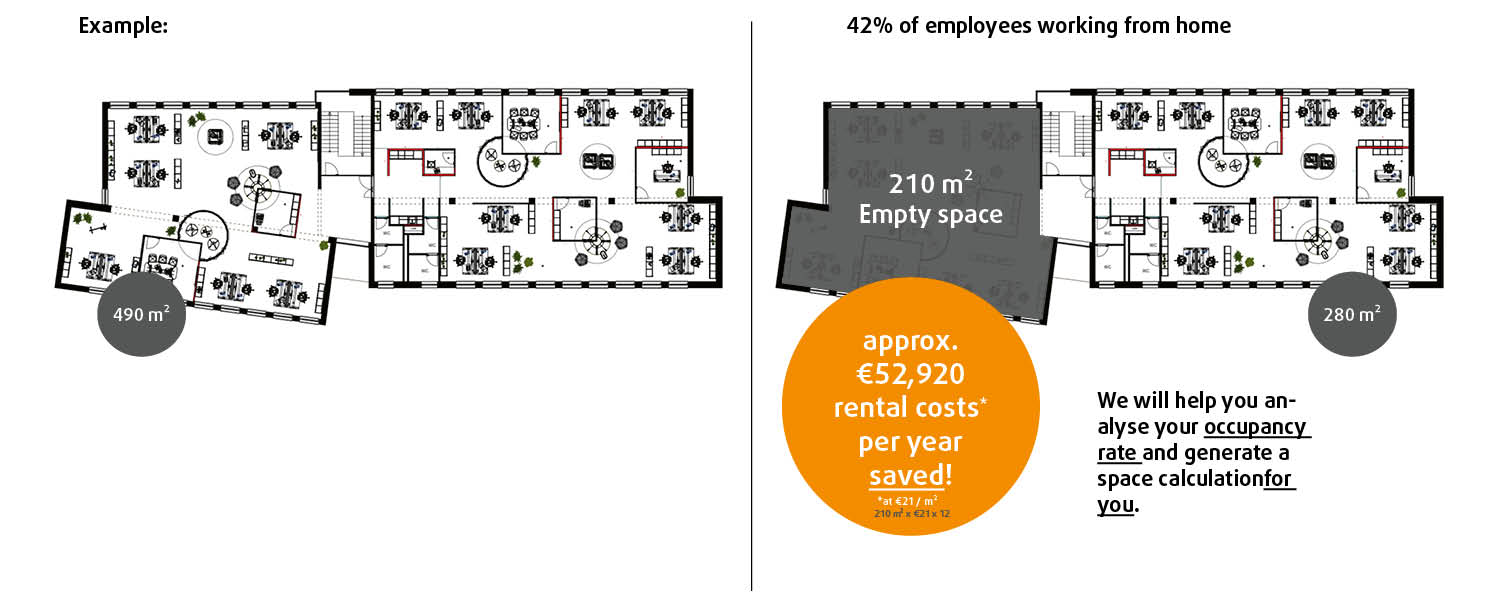
What is the desk sharing rate and how is it calculated?
With the desk sharing concept, the number of workstations is lower than the number of employees. This makes optimum use of space, promotes flexible working and saves costs. The desk sharing ratio shows the ratio of available workstations to employees.
The exact calculation varies from company to company. It can be based on the use of workstations and can be calculated by adjusting the calculation basis or attendance statistics, for example using workforce management software. An exemplary result is 1:1.25. This means 16 available workstations for 20 employees, which would correspond to an occupancy rate of 80 percent. In practice, however, this can vary.
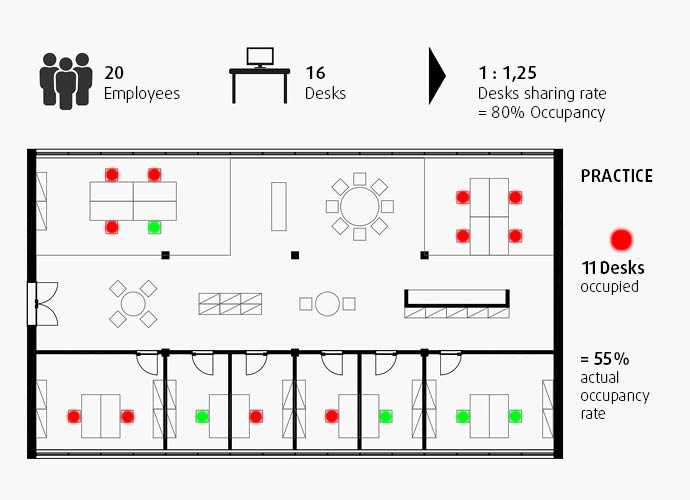
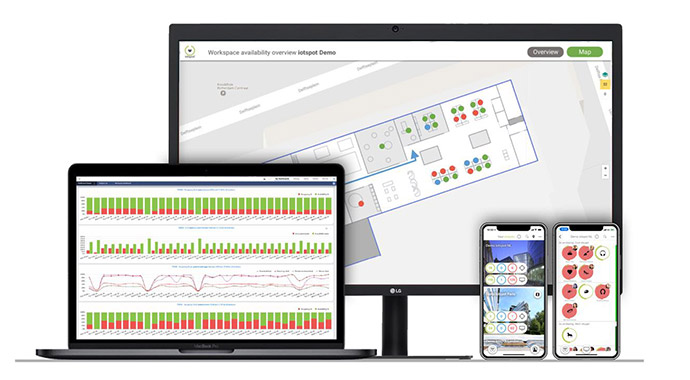
How relevant is a booking system for effective desk sharing?
Workplace management software supports the efficient implementation of desk sharing. A booking system and an occupancy overview provide a quick overview and allow employees to choose their workstation flexibly. At the same time, usage reports are generated, which can be used to further optimize workplace utilization. Automatic notifications support the work organization of the workforce. Find out more about the booking software from our partner LIZ here.
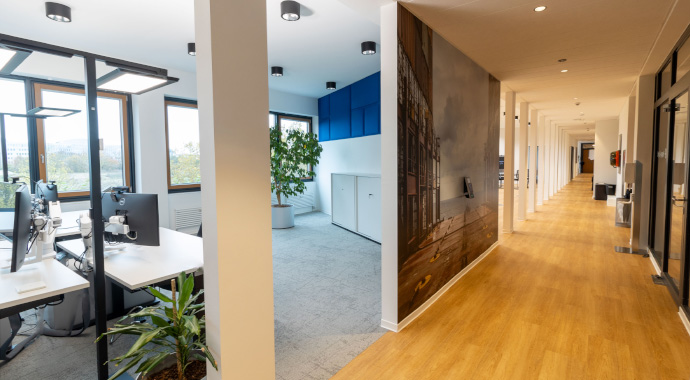
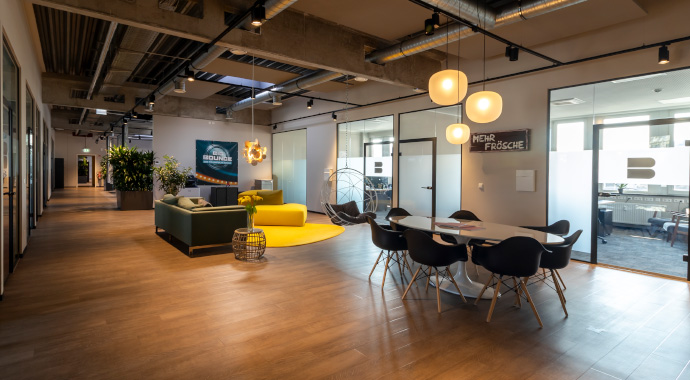
What are the challenges of desk sharing?
The introduction of desk sharing can raise concerns among employees. A common issue is the perceived disadvantages of desk sharing in terms of loss of privacy and personalization. Some employees feel the need to design their own workspace and store personal items. A high-quality locker system and portable storage boxes can also help with desk sharing.
Another common concern is the lack of communication within the team. Many employees associate the shared desk concept with the elimination of seating arrangements in departments. Individual desk sharing concepts that are precisely tailored to the needs of the workforce make it entirely possible to sit in a seating arrangement organized by department.
In many companies, desk sharing is simply aimed at avoiding empty desks on fixed home office days. The fear of disputes over free seats is unfounded with tailor-made desk sharing models, small-scale sharing structures and efficient booking software. Employers need to take their employees' concerns seriously and communicate their plans transparently. It is also essential to actively involve employees in the redesign of the work organization. In our THINK phase, we work out the employees' needs, clarify any concerns and engage in an in-depth exchange with the management team and workforce.
What does successful desk sharing look like in a company?
The introduction of desk sharing requires careful planning and preparation. Here are some points that companies should consider:
- Infrastructure: It is important to ensure that sufficient workstations, technical equipment and resources are available to meet the needs of employees.
- Communication and training: Employees should be well informed and trained to understand and successfully use the new concept. Communication about the purpose and benefits of desk sharing can allay fears or concerns.
- Flexible office concept: A flexible office concept is crucial for the successful implementation of desk sharing. Companies like coneon offer customized office concepts that are tailored to the customer's needs. From choosing the right furniture to designing workspaces, experts like coneon can help companies make the switch.
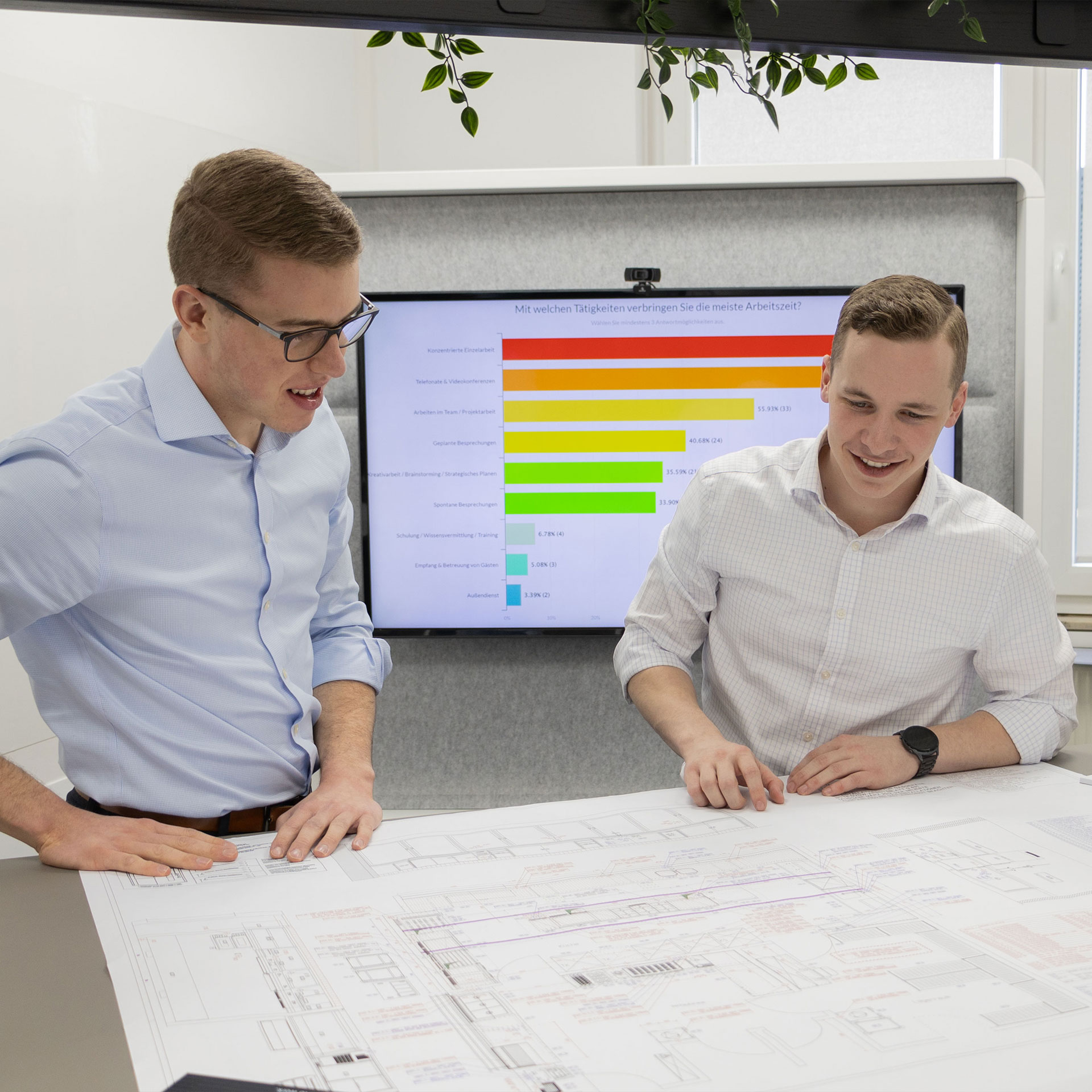
Frequently asked questions about desk sharing:
Employees can book their workplace using special reservation tools or software that allow them to select an available space for a specific period.
Privacy can be improved by acoustic partitions or flexible room design elements. It tends to be less in the shared desk concept than with fixed workstations.
Workplace safety can be ensured through clear safety guidelines, access controls and training to ensure that employees use their working environment safely.
The maximum number of employees that can share a workstation depends on the size of the office and the equipment available. However, there are often guidelines to prevent overcrowding.
The IT infrastructure should be flexible and adaptable to meet the needs of changing users. This includes the provision of laptops, wireless internet access and a secure network.
Desk sharing promotes spontaneous and collaborative working when employees are at different workstations. The use of shared areas can facilitate informal communication and teamwork.
Companies should establish clear guidelines for the use of shared workspaces, including cleanliness, personal responsibility and consideration for other users.
Durch regelmäßiges Feedback, Mitarbeiterbefragungen und eine flexible Gestaltung der Arbeitsumgebung können Unternehmen sicherstellen, dass die Bedürfnisse der Mitarbeitenden im Shared Desk-Konzept berücksichtigt werden.
These questions are a good starting point for companies to inform their employees about the switch to desk sharing and allay any concerns they may have. By providing clear and precise answers, companies can promote understanding and acceptance of desk sharing. Do you have any further questions?

Desk sharing with coneon
Clear communication and the provision of the necessary infrastructure are crucial to the successful integration of the shared desk concept. Desk sharing not only increases a company's agility, but also helps to reduce costs and optimize the use of office space. It creates a dynamic working atmosphere that promotes open exchange and creative brainstorming. To ensure the successful implementation of desk sharing models, the individual needs of employees should always be at the forefront. We can help you to develop a desk sharing concept that fits your company perfectly!
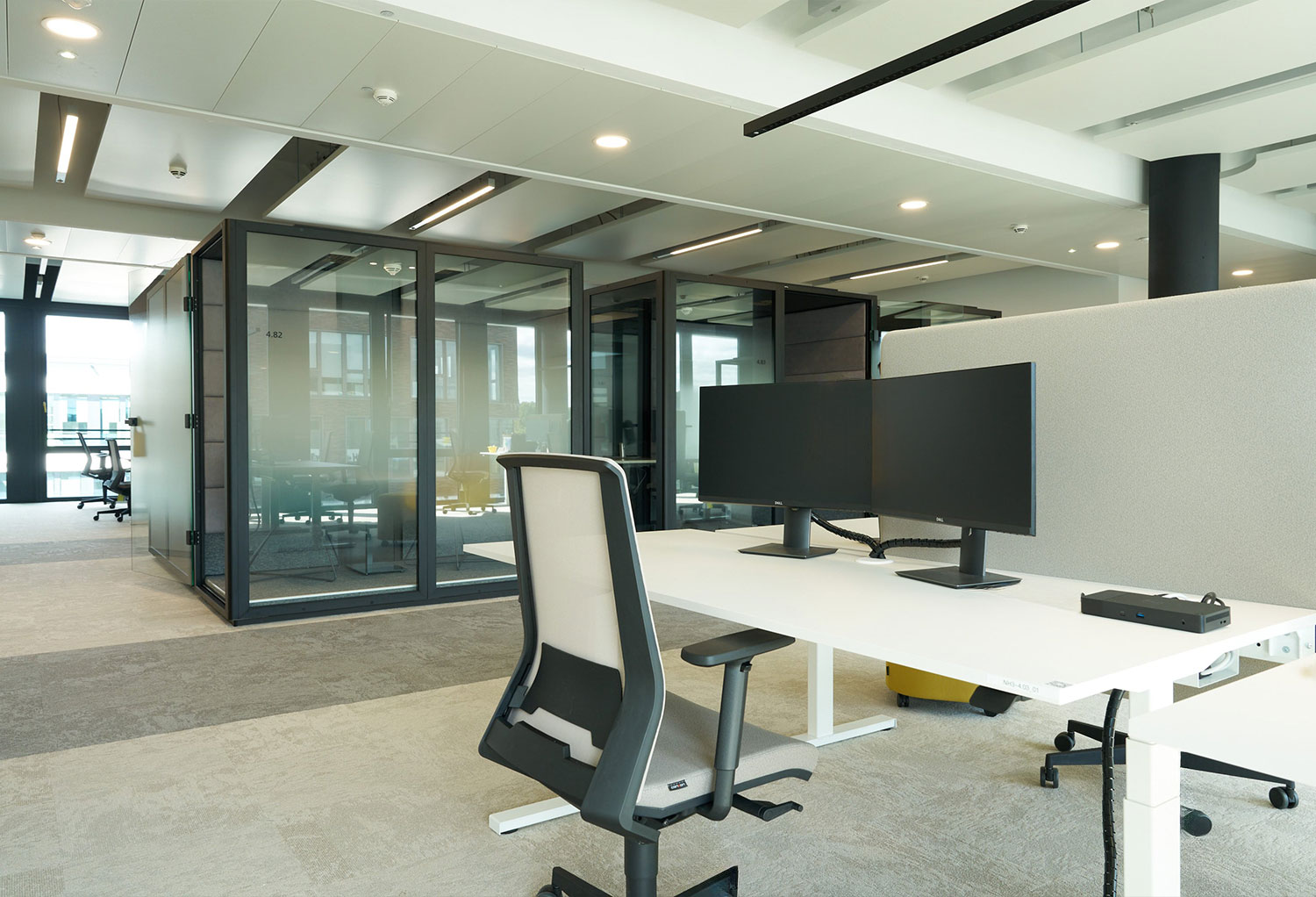
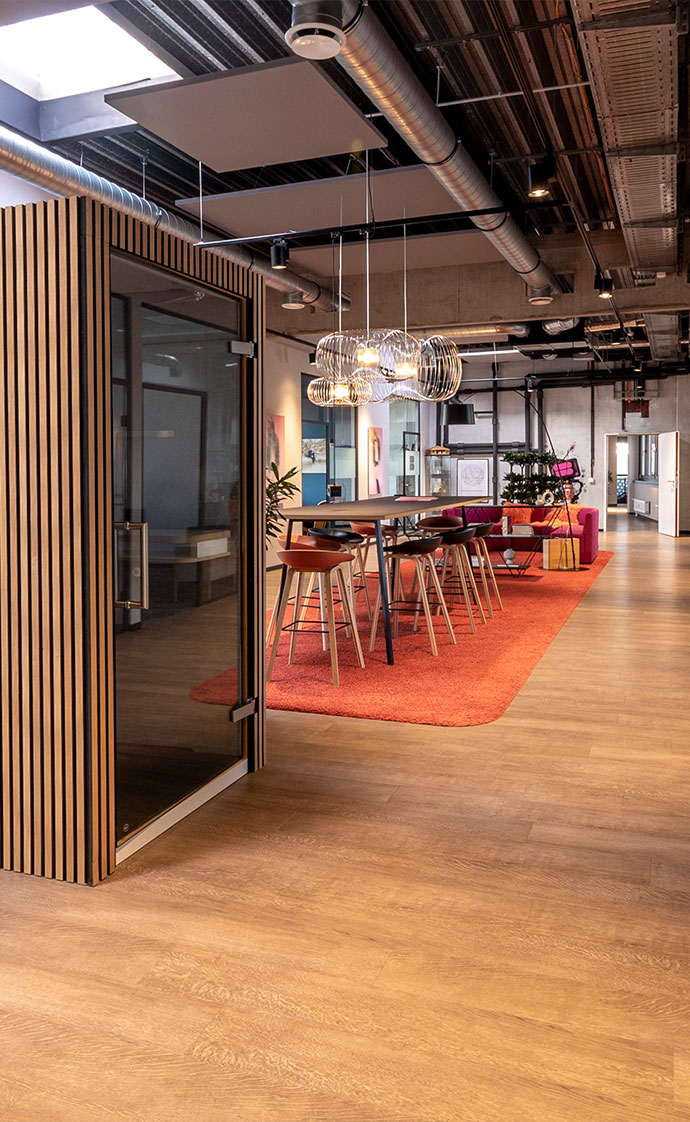
Request advice now!
Let's shape the future of your office work together - contact us for individual advice and joint planning.
